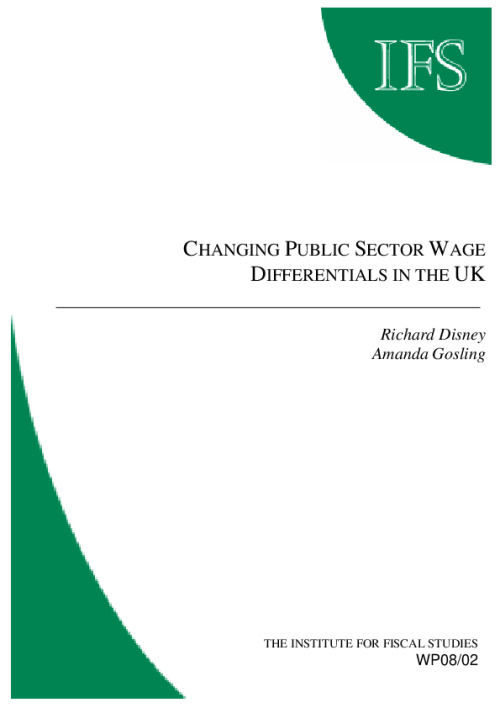<p>The paper estimates public sector wage differentials and their changes over time for men and women in the United Kingdom using panel data from the New Earnings Survey/Annual Survey of Hours and Earnings for the period 1975 to 2006. It presents estimates that are robust to unobserved workforce characteristics and that also show the impact of policy changes and cyclical factors, by allowing the average measured public sector 'premium' or 'penalty' to be time-varying. The methodology also allows us to examine the extent to which discrepancies in public and private sector pay induce changing relative qualities of the sectoral workforces. </p><p> </p><p>Results are given for men and women comparing mean wages in the public and private sectors as a whole. There is, on average, a very small positive premium over the whole period for public sector women and a very small penalty for men; however the variability of the differential is much more striking than the average difference. </p><p> </p><p>The method can also be applied to sub-groups in the labour market, and we illustrate the case of female public sector nurses and midwives, where the comparison group are private sector workers who have ever been, or will be, public sector nurses or midwives. Measured variations in this nurses' differential reflects the various changes in pay structure and government pay policies over the period; it is striking however that in the last decade, the 'raw' differential accruing to public sector nurses and midwives has declined almost continuously, whereas the composition and quality-adjusted differential shows no overall trend. </p>










